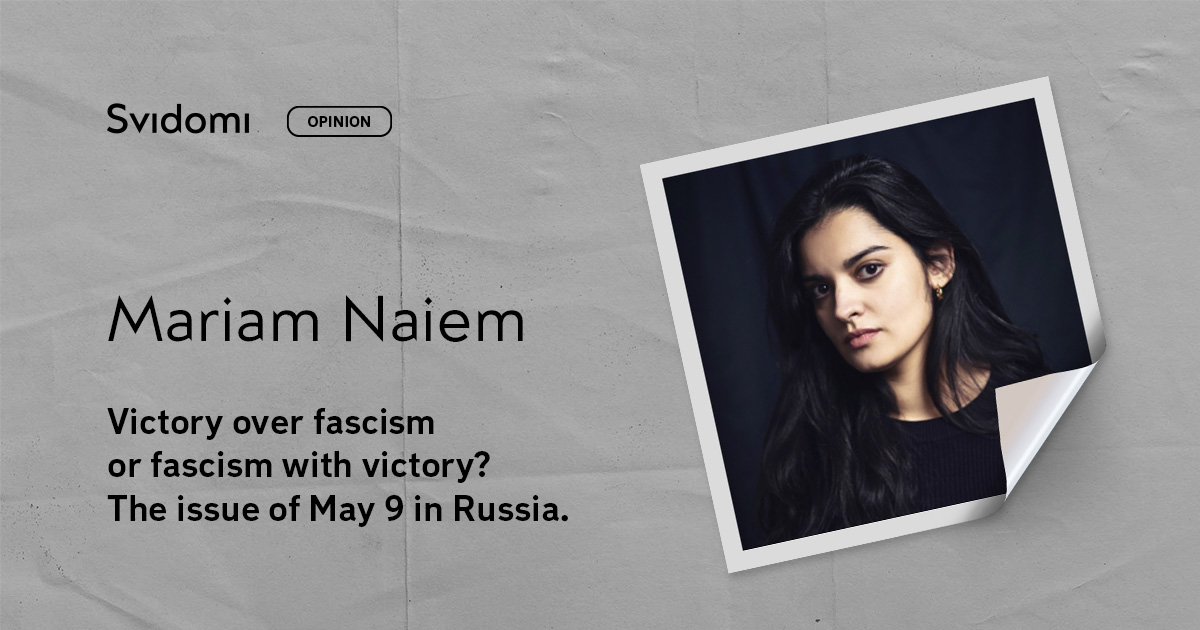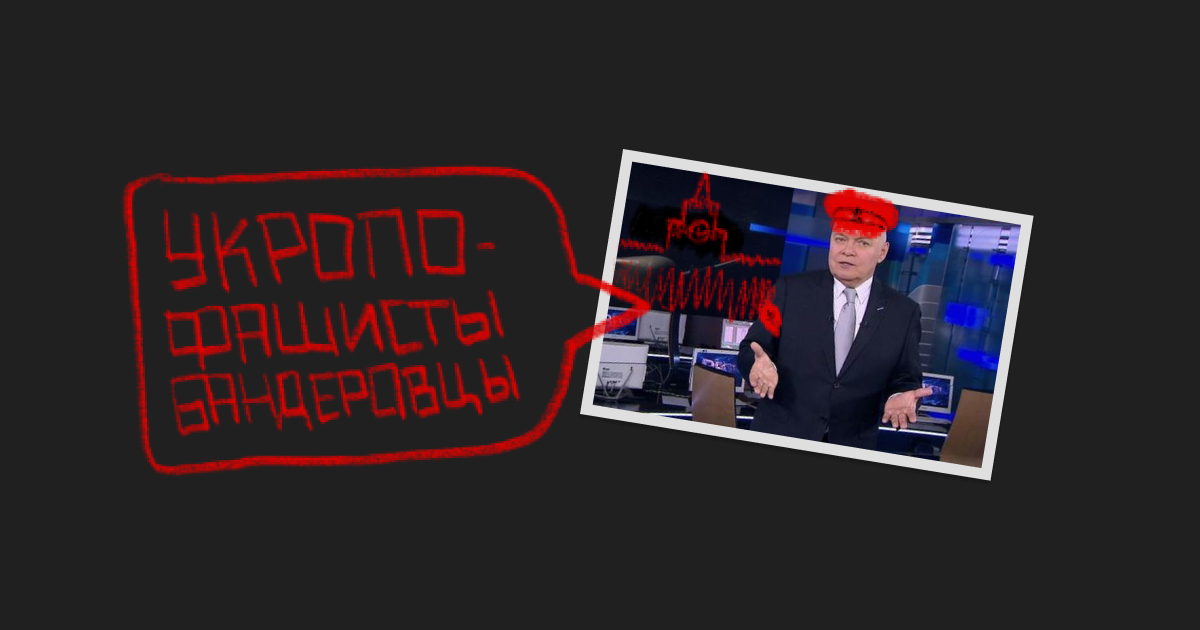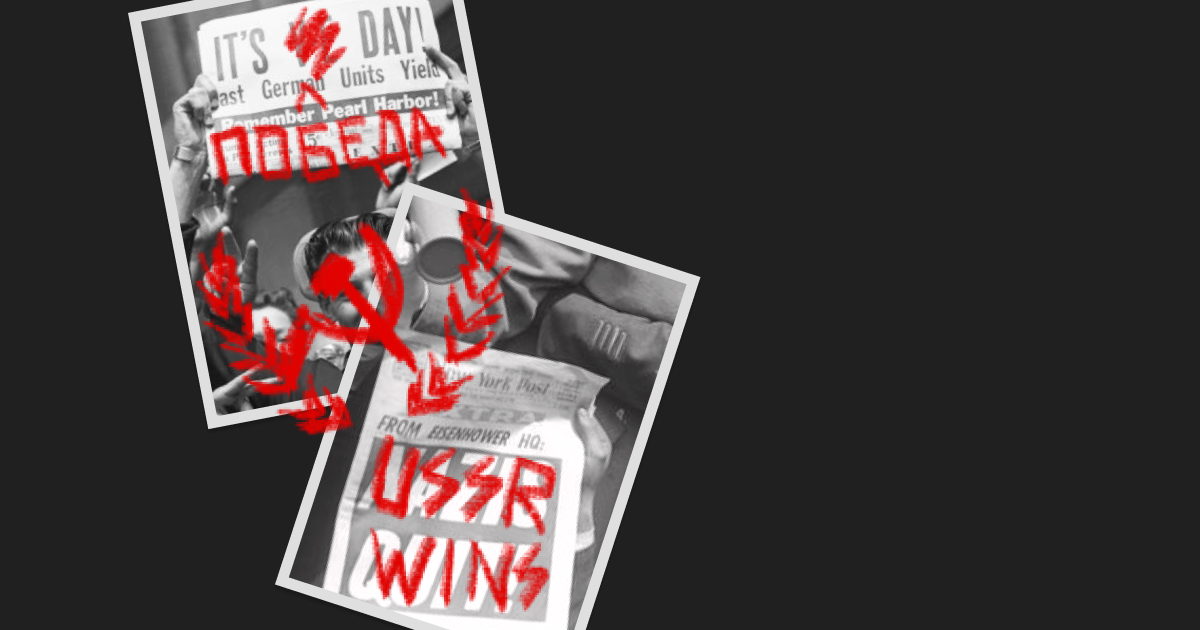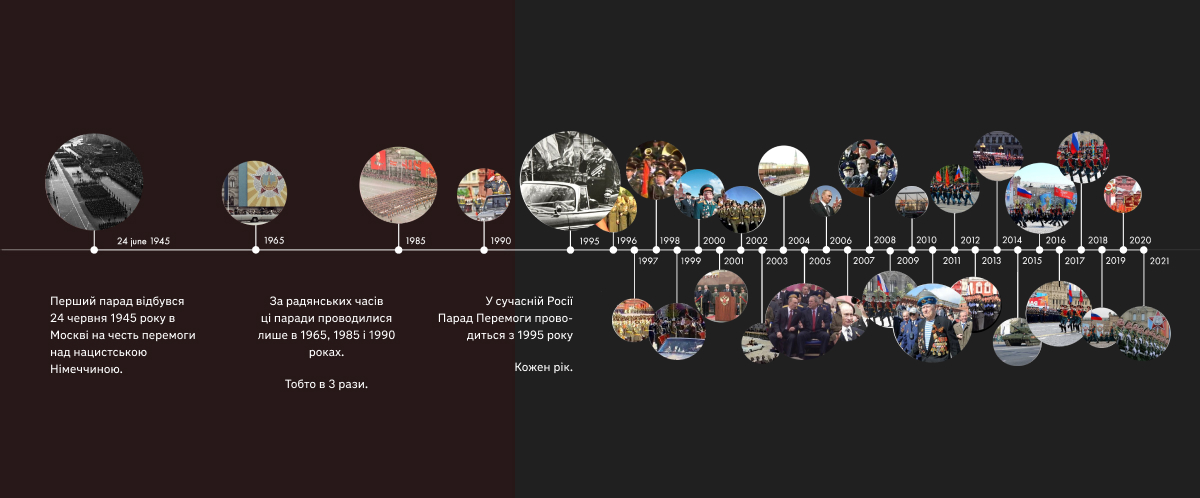Victory over fascism or fascism with victory? The issue of May 9 in Russia.
Mariam Naiem

In his work Eternal Fascism, Umberto Eco lists 14 features of fascist regimes. The first on this list is the cult of tradition. The "cult of victory" has become the central pillar of Russian propaganda. This tradition is nurtured throughout the life of Russians: starting in kindergarten, where children wear Soviet outfits, and reaches its peak with the words "we can do it again" and the St. George Ribbon in adulthood.
Modern Russia has levelled the historical context of May 9 and turned it into a cult that justifies the fascist regime. This so-called "holiday" is not meant to show respect for veterans but is a carnival with elements of fascism to support the state myth. The Day of Victory over Fascism has become a cult for the new fascism.
But how did this happen?
To turn the most anti-fascist day into a fascist holiday, you will need the following:
50 years of complete appropriation of the victory over fascism and Nazism
During the celebration of Victory Day, only one thing should be clear: without the USSR, there would have been no victory. The emphasis should be on the actions of the Soviet (and therefore Russian) army alone. The contributions of other European countries, the US or the UK, play a secondary role and are not mentioned.
The process of attributing the victory to the USSR alone began under Brezhnev. It helped to emphasise the uniqueness of the Soviet people, their sacrifice, and their sacred mission. Therefore, any attempt to analyse the role of all countries or Stalin's activities should be perceived as "rewriting history".
The idea of victory belongs only to the Russians and the Russian people and is not the result of the efforts of other countries or republics. But, unfortunately, the cult of May 9 reflects this idea and puts it on a pedestal, while everything else is considered a rewriting of history.
30 years of manipulating the word "fascist"
The cult of victory is an essential element of the division between heroes and murderers, between "us" and "them". In the May 9 cult, fascists are monsters that need to be killed so that they don't destroy you. Victory Day is an important date that reminds Russians what a fascist is.

For the last eight years, Russian state propaganda has been repeating that a fascist is a Ukrainian. In the Russians' imagination, just as Stalin once fought the Nazis, today, a new leader, Putin, continues the "sacred struggle" and kills "fascists". Every May 9 celebration is nothing more than the legalisation of the genocide of Ukrainians.
About 50 years of cultivating aggression and self-importance
The fewer veterans there are, the more grotesque the victory carnival looks. There is a reason for this: the war witnesses and its victims remember what society paid for the victory and have evidence of the Soviet regime's crimes.
Many countries commemorate the victims of World War II on May 8 and analyse the causes of massive losses. In Russia, May 9 is a reminder of its military power and a threat that it "can do it again".

The total losses, including the civilian population of the USSR, amounted to 24 million people. Still, these figures are not mentioned at the carnival of "victory" because the holiday does not serve as a commemoration but is only an aggressive call for military aggression and devaluation of the lives of those who died in World War II.
Ignoring reality allows the propaganda apparatus to reassure the population about possible participation in new wars and, moreover, ensures their support, as the population does not feel at risk. It is convinced that "Russia is invincible".
In addition to the militaristic reassurance of a society that is constantly at war, the victory in World War II has become Russia's main source of pride, as there are no other achievements to be proud of.
You have to repeat it every year
It is important to ignore that even four years after the victory in 1949, May 9 was not a day off, and during the existence of the USSR, when most veterans were still alive, the parade was held only a few times.
After Russia gained its independence, the parade has been held annually, and each year it has become more spectacular. However, this day has fewer historical ties to reality over time and has become the main religious holiday of a new deity — the "Russian world."

On May 7, 1945, Germany signed an act of surrender near Reims, which came into force on May 8. At Stalin's request, the surrender was "duplicated" on May 8 in the Soviet occupation zone in the suburbs of Berlin.
The celebration of 9 May was introduced in the USSR in 1945, cancelled in 1948, but restored in 1965. It was Russia's appropriation of May 9 that led to distancing Ukraine from the date. After all, Victory Day is a new religious holiday in Russia, and the St George Ribbon is a new ‘cross’ and a social signal of involvement.
Russia has become so caught up in accusations of fascism that it hasn't noticed how it has started wearing a swastika on its sleeve.


